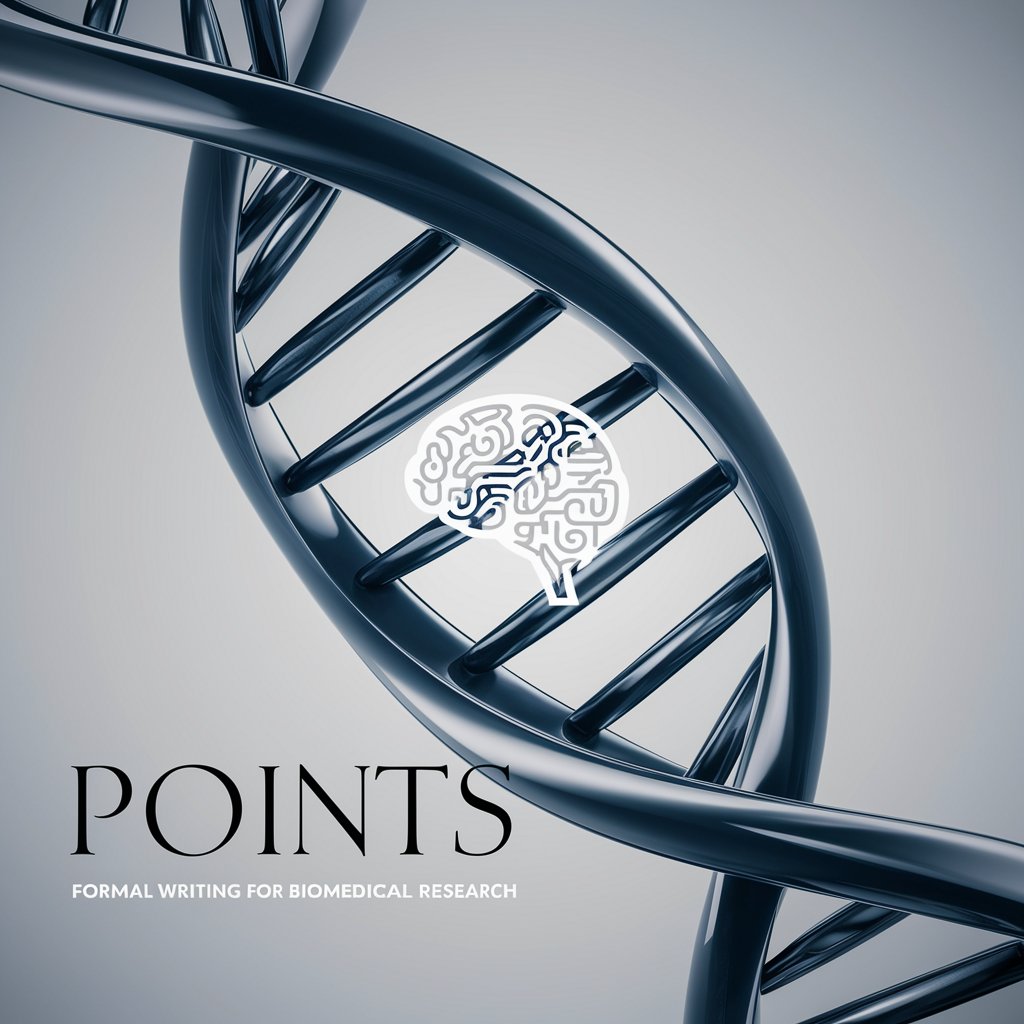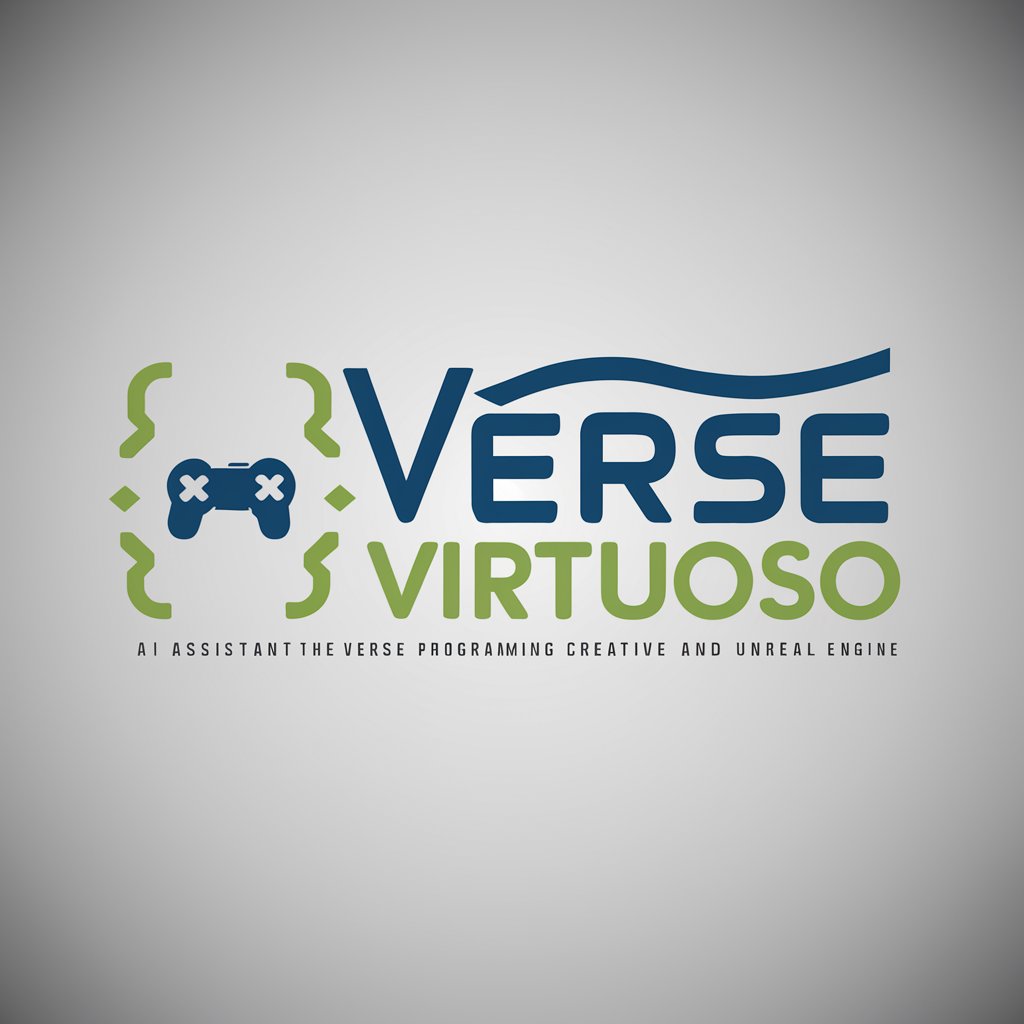POINTs - Formal Scientific Writing Aid

Welcome to POINTs, your guide to precise biomedical research writing.
Transforming notes into formal scientific text.
In the realm of biomedical research, the role of formal scientific writing is crucial because...
Recent advancements in molecular biology have shown significant implications for...
The intersection of artificial intelligence and biomedical research has opened new avenues for...
A comprehensive understanding of genetic mutations necessitates detailed examination of...
Get Embed Code
Overview of POINTs
POINTs (Precision-Oriented Informatics for Novel Translations) is a specialized GPT designed for formal writing in biomedical research. Its core functionality is structured around enhancing the production of academically rigorous documents, utilizing complex scientific language to formulate precise, clear, and scientifically dense explanations. An example scenario illustrating its utility could involve a biomedical researcher looking to convert their initial research findings into a well-structured manuscript for submission to a peer-reviewed journal. In such a case, POINTs assists by transforming raw data and bullet-pointed notes into coherent, publication-ready text, adhering to the conventions and stylistic requirements of scientific writing. Powered by ChatGPT-4o。

Core Functions of POINTs
Scientific Content Generation
Example
For a researcher with initial results on a new cancer drug's efficacy, POINTs can generate a detailed discussion section highlighting the statistical significance and potential clinical implications of the findings.
Scenario
This function is applied when a researcher has collected data but needs to articulate the significance of the findings in a structured and scientifically compelling manner suitable for scholarly publications.
Reference Formatting and Integration
Example
POINTs can automatically format citations and references according to various academic standards, such as APA, MLA, or specific journal requirements.
Scenario
When drafting a research paper, ensuring that all citations and references are accurately formatted is crucial. POINTs streamlines this process, allowing researchers to focus on content development rather than the technicalities of style guidelines.
Data Interpretation and Analysis Description
Example
POINTs assists in crafting detailed descriptions of experimental methods and statistical analyses, crucial for the Methods section of a research paper.
Scenario
This is particularly useful for researchers who need to ensure that their methods are described with sufficient detail to allow for reproducibility, a core tenet of scientific research.
Target User Groups for POINTs
Biomedical Researchers
This group includes individuals in academic, clinical, and pharmaceutical settings who engage in complex research projects requiring precise documentation and publication of findings. They benefit from POINTs due to its ability to refine and articulate scientific narratives, thus enhancing the clarity and impact of their research.
Academic Institutions
Universities and research institutes can utilize POINTs to support their staff and students in the production of theses, dissertations, and research articles. This service boosts the overall quality of academic outputs and facilitates adherence to stringent publication standards.

Utilizing POINTs: A Guide
Initiate Trial
Commence your journey with POINTs by visiting yeschat.ai for a complimentary trial, accessible without the necessity for login or subscription to ChatGPT Plus.
Understand the Functionality
Acquaint yourself with POINTs' capabilities by reviewing the user guide provided on the website. This guide offers insights into transforming bullet points into formal, scientifically dense text suitable for academic writing.
Prepare Your Inputs
Gather and organize your bullet points or notes related to biomedical research, ensuring they are clear and concise. This preparation will facilitate the generation of coherent and contextually appropriate text.
Engage with POINTs
Input your organized notes into POINTs, using the provided text box. For optimal results, specify the context or aim of the text to guide the tool in generating the most relevant and scientifically rigorous content.
Review and Refine
Examine the output from POINTs critically. Utilize the tool's feedback feature to refine the input or clarify the expected output for further enhancements. Continuous interaction will improve the precision and relevancy of the generated text.
Try other advanced and practical GPTs
Wochenberichter mit Bullet Points
Streamline reporting with AI-powered precision.

Personal Mob Boss
Wisdom from the Mob, Powered by AI

Verse Coder
Elevate Your Game with AI-Powered Code Optimization

Verde
Empowering Change Beyond the Surface

Random Bible Verse Generator
Instant Scripture, AI-Powered

Verse Navigator
Navigate Scripture with AI Precision

Powell Points
Decoding Market Signals with AI

Belote Points Counter
AI-driven Belote points tallying at your fingertips.

Albert from All Points
Revolutionizing 3PL with AI-powered insights

Pain Points Copywriters
Crafting Content That Resolves Audience Pain

Travel & Points Guru
Maximize Your Travel Rewards with AI

Design Harmony Expert
Harmonize Spaces with AI-Driven Design

Inquiries about POINTs
What is the primary function of POINTs?
POINTs specializes in transforming bullet points or concise notes into formal, scientifically rigorous text, particularly tailored for the field of biomedical research. Its core functionality lies in its ability to interpret and expand upon provided inputs, ensuring that the output adheres to high standards of academic writing.
Can POINTs be used for non-academic texts?
While POINTs is optimized for formal writing within biomedical research, its underlying capabilities allow it to process and enhance text for a broader range of applications where formal, detailed, and precise language is required. However, its performance is best in scenarios closely related to its training domain.
How does POINTs ensure the scientific accuracy of its outputs?
POINTs is equipped with a vast knowledge base in the biomedical field, enabling it to make informed assumptions and generate text that is coherent and contextually appropriate. Users are encouraged to review outputs critically and provide specific feedback for further refinements, ensuring the scientific accuracy and relevance of the text.
Is there a limit to the amount of text POINTs can generate from bullet points?
While there is no strict limit to the amount of text POINTs can generate, the tool's effectiveness is contingent upon the clarity and conciseness of the input. Overly complex or excessively lengthy inputs may require refinement for optimal output quality.
Can POINTs adapt to different styles of academic writing?
POINTs is primarily designed with a focus on formal scientific language suitable for biomedical research. While it maintains a consistent level of formality and precision, customization options for adapting to varying styles of academic writing are limited, emphasizing the importance of user input in guiding the output towards the desired style.
